Okra (Abelmoschus esculentus) Profile
Written by Iris
Aug 04 2021

Okra is also known by the botanical name Abelmoschus esculentus or Hibiscus esculentus.Okra (Abelmoschus esculentus) is a member of the malvaceae family, which also includes hibiscus, hollyhock and cotton. Okra (Abelmoschus esculentus) dates back to ancient Egypt and Ethiopia and arrived in the United States in the 1600s. Okra (Abelmoschus esculentus) can be grown every year in all usda areas, but it does thrive in the climate where corn is grown in the southern states. The unripe edible seed pods of the okra plant became a staple in southern cuisine, used mainly as a side dish, or for thick okra and stews, and also widely used in Indian cooking.
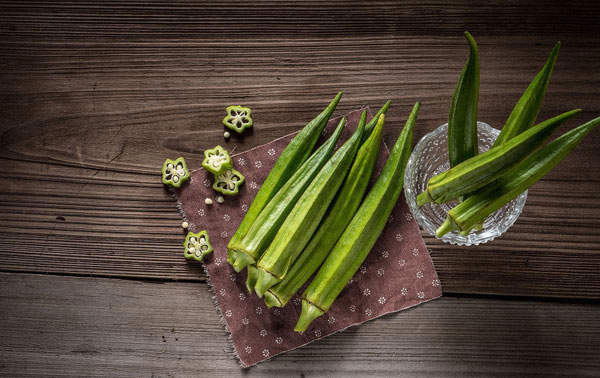
Sow your okra seeds into raised mounds spaced 1 to 2 feet apart with 3 feet between each row. Align your rows facing east to west in a location that receives full sunlight throughout the day. Plant each seed 1 inch deep, with several seeds planted in each mound.
Water each mound often enough to keep the soil moist to the touch without saturating it. Continue watering the remaining okra plants often enough to prevent the soil from completely drying out.
Apply additional fertilizer to the sides of the okra mounds at a rate of 3 ounces for every 100 feet of planting row. Make your second application of fertilizer when your okra reaches roughly 6 to 8 feet in height. Apply fertilizer again at the same rate three weeks later to promote steady growth.
Begin checking your okra plants for harvestable pods 50 to 60 days after their initial planting date. The pods of your okra plants are ready to harvest when they are roughly 2 to 4 inches long.
The key ingredient in growing okra is SUN. Okra needs full sun. If this plant doesn’t get maximum light exposure while growing you will have poor quality okra.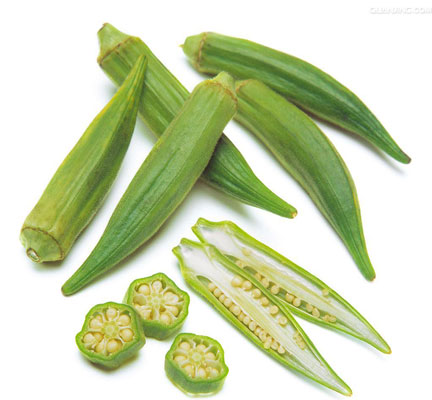
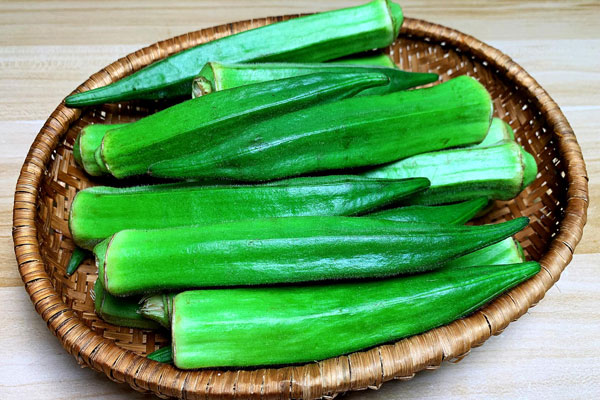
Okra is very nutritious being rich in pectin, iron and calcium as well as vitamin A.
Seed is also used ground up to make meal used in making bread or made into 'tofu' or 'tempeh'. The seeds can also be roasted, ground and used as a coffee substitute. Many sources say this is the best substitute they have found but it can induce sweating.
Leaves are unusually nutritious and can be cooked like spinach, added to soups etc or dried for adding to any dish. Washing well before cooking removes the tiny hairs and makes the leaves enjoyably palatable.
The roots are also used extensively as they have a strong demulcent action and some claim they are more effective than marsh mallow (Althaea officinalis) and certainly easier to grow and harvest. Roots need to be fresh and fairly young. Okra mucilage has been used as a plasma replacement or blood volume expander. The root juice can be used to treat cuts, boils and wounds. The leaves can be used as a poultice for similar reasons.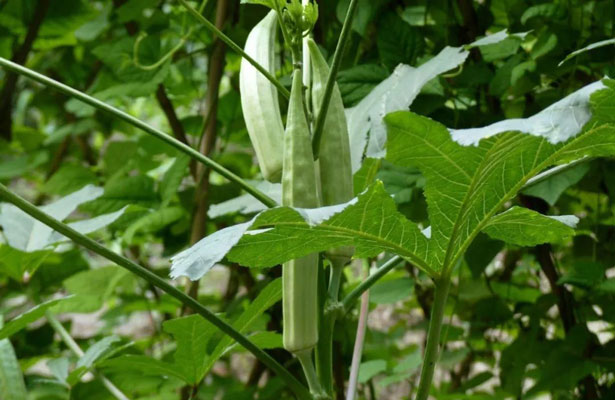
'Annie Oakley' is a hybrid plant that provides a nice yield. It grows 3 to 4 feet tall.
'Burgundy' is an heirloom variety that has deep reddish seed pods that lose some of the color with cooking. It grows to around 4 feet.
'Clemson Spineless' is an heirloom plant known for its good flavor. It is a larger variety, growing 4 to 5 feet high.
'Emerald' has especially long seed pods at 7 to 9 inches. It is a spineless heirloom plant that grows to around 4 feet.
'White Velvet' is another heirloom plant. It has tender white pods and grows to 5 feet.
Keep an eye on your garden by walking through it each day, looking closely on the underside of leaves and on lower branches and stems for aphids and stink bugs. You may also catch them feeding on the juices of emerging pods. Keep in mind that beneficial insects such as ladybugs are your friends, and should be allowed to stay.
Keep an eye out for cabbage worms and flea beetles eating your okra leaves, and check the undersides of leaves for aphids, bug eggs and whiteflies. You can hand pick insects off of your plants or douse them with a steady stream of hose water to knock them off of the plants. In most situations, a combination of hand picking and dousing is all that’s needed to avoid a serious infestation.
A fungus known as fusarium wilt may sometimes occur where there is too much water provided or insufficient drainage. You will notice it by its telltale sign, which is drooping yellow leaves. Plants that have succumbed to this fungus must be removed and destroyed immediately, to avoid spreading it to other plants.
Anthracnose fungus is another possible issue with okra plants. Its presence is noted by black spots on leaves. Again, if the plant has been compromised by the fungus, you should remove any infected plants quickly to prevent further spread in the garden.
Powdery mildew, which causes white and powdery spots on plants, may also affect okra, especially when growing in humid and overly moist conditions. Remove affected portions of the plant, prune back all plants for good airflow, and always plant in well-draining soil.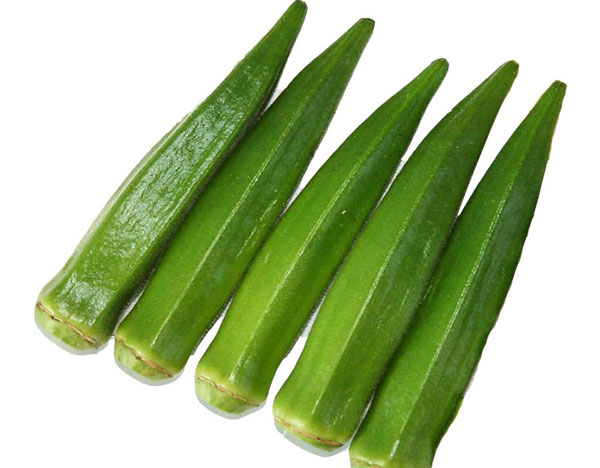
Okra (Abelmoschus esculentus) PictureOkra (Abelmoschus esculentus) InfoOkra (Abelmoschus esculentus) Distribution AreaHow to Grow and Care for Okra (Abelmoschus esculentus)Harvesting and storageUses of Okra (Abelmoschus esculentus)Varieties of Okra (Abelmoschus esculentus)Okra (Abelmoschus esculentus) Common Pests/Diseases
Okra (Abelmoschus esculentus) Picture

Okra (Abelmoschus esculentus) Info
| Botanical Name | Abelmoschus esculentus |
| Common Names | Okra, gumbo, lady's finger |
| Plant Type | Annual, vegetable |
| Mature Size | 3–5 ft. tall and wide |
| Sun Exposure | Full sun |
| Soil Type | Moist, fertile, well-drained |
| Soil pH | Acidic (6.0 to 6.8) |
| Bloom Time | Seasonal |
Okra (Abelmoschus esculentus) Distribution Area
The cultivation of okra extends throughout the tropics and warmer parts of temperate Asia. It is commercially grown in India, Turkey, Iran, West Africa, Yugoslavia, Bangladesh, Afghanistan, Pakistan, West Bengal, Burma, Japan, Malaysia, Brazil, Ghana, Ethiopia, Cyprus, and the southern USA.How to Grow and Care for Okra (Abelmoschus esculentus)
How to Grow Okra (Abelmoschus esculentus)
- With Seeds
Sow your okra seeds into raised mounds spaced 1 to 2 feet apart with 3 feet between each row. Align your rows facing east to west in a location that receives full sunlight throughout the day. Plant each seed 1 inch deep, with several seeds planted in each mound.
Water each mound often enough to keep the soil moist to the touch without saturating it. Continue watering the remaining okra plants often enough to prevent the soil from completely drying out.
Apply additional fertilizer to the sides of the okra mounds at a rate of 3 ounces for every 100 feet of planting row. Make your second application of fertilizer when your okra reaches roughly 6 to 8 feet in height. Apply fertilizer again at the same rate three weeks later to promote steady growth.
Begin checking your okra plants for harvestable pods 50 to 60 days after their initial planting date. The pods of your okra plants are ready to harvest when they are roughly 2 to 4 inches long.
How to Care for Okra (Abelmoschus esculentus)
- Light
The key ingredient in growing okra is SUN. Okra needs full sun. If this plant doesn’t get maximum light exposure while growing you will have poor quality okra.
- Soil
- Once okra plants are established, they can handle brief dry spells. For best yields, water well at least every seven to 10 days if you haven't had rainfall. Temperature
- Fertilizer

Harvesting and storage
Start picking when pods are no more than 2 to 3 inches long – this takes about five days from flowering. If you allow pods to develop to their full size, the plant will stop producing. The smaller pods should also be soft. As they get larger, they will become tough, fibrous and unfit for green use. For a continuous harvest, pick the pods every three days. Remove pods by cutting to avoid disturbing the roots.
Uses of Okra (Abelmoschus esculentus)
Edible Uses of Okra (Abelmoschus esculentus).
A lot of people don't like okra because has a lot of mucilage. Actually this is one of its good properties and its very good for the stomach and digestive system. Its just a case of finding the preferred way to cook it. Our best choice is to chop it up and stir fry it along with other vegetables. This way it does not get slimy and works as an excellent vegetable with almost any meat. Second choice is chopped up and deep fried. Battered and deep fried is heavenly. It is an excellent choice to add to soups and stews as the mucilage helps to thicken the mix and how can anyone make gumbo without okra.Okra is very nutritious being rich in pectin, iron and calcium as well as vitamin A.
Seed is also used ground up to make meal used in making bread or made into 'tofu' or 'tempeh'. The seeds can also be roasted, ground and used as a coffee substitute. Many sources say this is the best substitute they have found but it can induce sweating.
Leaves are unusually nutritious and can be cooked like spinach, added to soups etc or dried for adding to any dish. Washing well before cooking removes the tiny hairs and makes the leaves enjoyably palatable.
Medical Uses of Okra (Abelmoschus esculentus).
The mucilaginous properties of okra are extremely useful in treating digestive disorders. It helps calm the digestive system and encourage it to heal. In most cases eating okra on a daily basis can be exceptionally beneficial. (try stir fry for most palatable results). Ground okra can also be used in capsules or compressed into tablets. In some cases the pods are used in others the seeds. All these can are also used to treat catarrhal infections, ardor urinae, dysuria and gonorrhoea.The roots are also used extensively as they have a strong demulcent action and some claim they are more effective than marsh mallow (Althaea officinalis) and certainly easier to grow and harvest. Roots need to be fresh and fairly young. Okra mucilage has been used as a plasma replacement or blood volume expander. The root juice can be used to treat cuts, boils and wounds. The leaves can be used as a poultice for similar reasons.
Other Uses of Okra (Abelmoschus esculentus)
The severely fiberous stems have long been used for making fiber similar to jute and used in ropes and course fabrics. It can also be used in paper making. The mucilage can be used to glaze paper and is added to confectionary. Seed pods make delightfully attractive additions to dried flower displays.
Varieties of Okra (Abelmoschus esculentus)
Okra varieties that are labeled spineless are less irritating to harvest, but be aware that they are not completely spine-free. Consider these okra varieties:'Annie Oakley' is a hybrid plant that provides a nice yield. It grows 3 to 4 feet tall.
'Burgundy' is an heirloom variety that has deep reddish seed pods that lose some of the color with cooking. It grows to around 4 feet.
'Clemson Spineless' is an heirloom plant known for its good flavor. It is a larger variety, growing 4 to 5 feet high.
'Emerald' has especially long seed pods at 7 to 9 inches. It is a spineless heirloom plant that grows to around 4 feet.
'White Velvet' is another heirloom plant. It has tender white pods and grows to 5 feet.
Okra (Abelmoschus esculentus) Common Pests/Diseases
Okra is not typically prone to pests or disease, but it is certainly possible. Practicing crop rotation will help immensely to help avoid potential issues. Using high quality seed, providing ample air circulation and appropriate moisture levels will also go a long way towards keeping your plants safe from pests and disease issues. Keep your vegetable patch clean, and promptly remove old plant debris like dead leaves and old vegetation.Keep an eye on your garden by walking through it each day, looking closely on the underside of leaves and on lower branches and stems for aphids and stink bugs. You may also catch them feeding on the juices of emerging pods. Keep in mind that beneficial insects such as ladybugs are your friends, and should be allowed to stay.
Keep an eye out for cabbage worms and flea beetles eating your okra leaves, and check the undersides of leaves for aphids, bug eggs and whiteflies. You can hand pick insects off of your plants or douse them with a steady stream of hose water to knock them off of the plants. In most situations, a combination of hand picking and dousing is all that’s needed to avoid a serious infestation.
A fungus known as fusarium wilt may sometimes occur where there is too much water provided or insufficient drainage. You will notice it by its telltale sign, which is drooping yellow leaves. Plants that have succumbed to this fungus must be removed and destroyed immediately, to avoid spreading it to other plants.
Anthracnose fungus is another possible issue with okra plants. Its presence is noted by black spots on leaves. Again, if the plant has been compromised by the fungus, you should remove any infected plants quickly to prevent further spread in the garden.
Powdery mildew, which causes white and powdery spots on plants, may also affect okra, especially when growing in humid and overly moist conditions. Remove affected portions of the plant, prune back all plants for good airflow, and always plant in well-draining soil.

Okra (Abelmoschus esculentus) Companion Plants
Plants like kale, broccoli, cauliflower, Brussels sprouts, Swiss chard, and other brassica family members plant well with okra. They add nutrients to the soil which helps improve the health of your okra plants. Sunflowers. These flowers act as a companion plant to attract pollinators, allowing your okra pods to bloom.
Latest Updated
- Benefits of Bugleweed - 7 Science-backed Health Benefits
- Bugleweed Dangers & Side Effects - Is It Poisonous?
- How to Plant Evergreen Trees - What You Should Know
- When to Plant Evergreens - Grow Guide for Evergreen Trees
- 12 Wonderful Evergreen Shrubs for Your Garden
- 12 Popular Evergreen Plants with Pictures for Beginners
- When And How To Prune A Lilac Bush Like a Pro
- How to Grow & Care for Lilac Vine (Hardenbergia Violacea)
- Japanese Lilac Tree (Syringa Reticulata) Care & Propagation Guide
- Shumard Oak Pros and Cons - What to Know
Popular Articles
- Winter maintenance of Antirrhinum Majus
- How to Grow Terminalia Mantaly Tree
- How to Grow and Care for Crossostephium Chinense
- How to grow Antirrhinum Majus in spring
- Peristeria Elata (Dove Orchid) Profile: Info & Care Guide
- Underwatered Snake Plant (Sansevieria Trifasciata) - Signs And How To Fix
- How to Care for Brazilian Jasmine Plant (Mandevilla Sanderi)
- How to Grow & Care for Graptopetalum Purple Delight in Summer
- Rosa Chinensis (China Rose): Plant Growing & Care Tips
- How to Care for Baby Sun Rose (Aptenia Cordifolia)